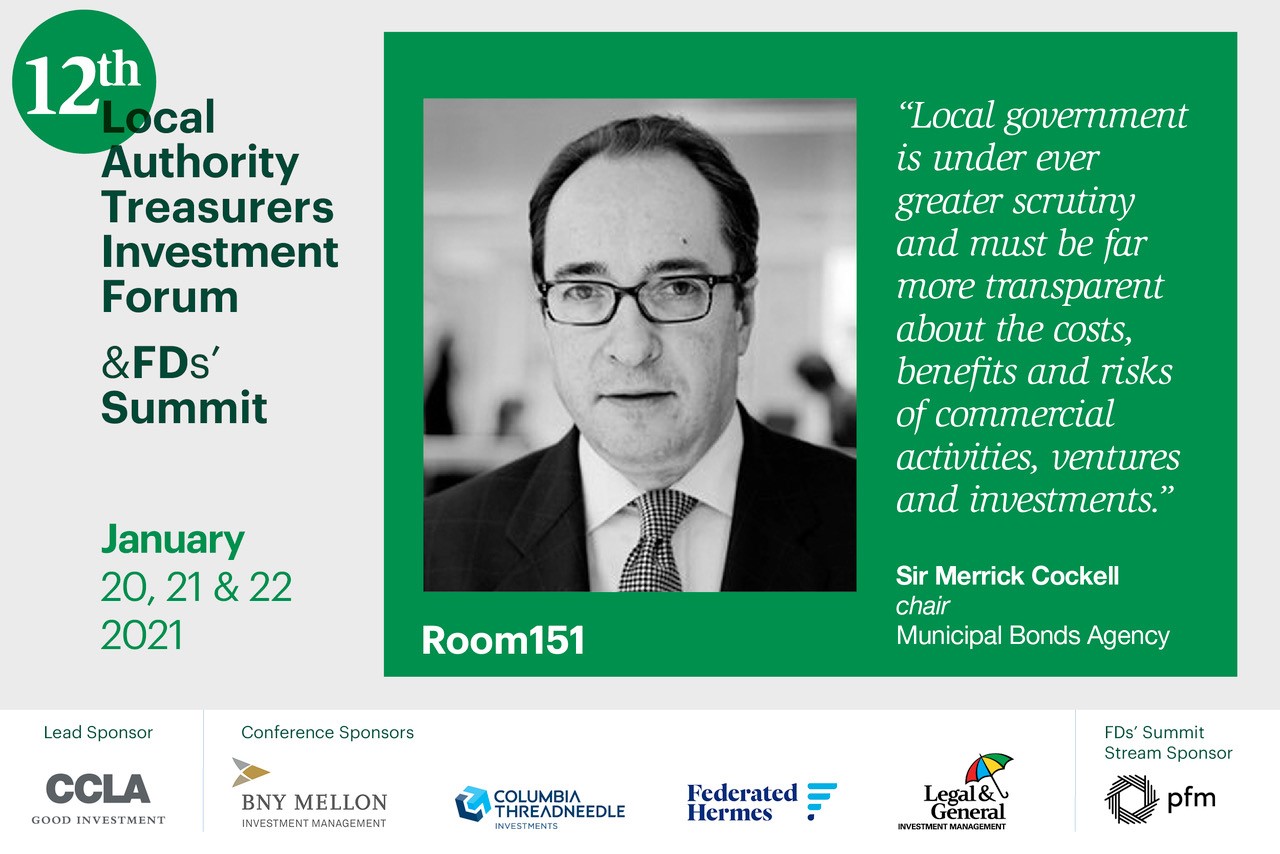
The future lending terms of PWLB is under review with the possibility of a ban on borrowing for commercial investment on the horizon. David Green argues some “fundamentals” need resolving first.
So, HM Treasury has extended the deadline for its consultation on PWLB future lending terms to 31st July. Apparently, this was at the request of the sector, although I doubt many people were really asking for the promised cut in interest rates to be delayed by two months.
The consultation is the latest attempt by the powers that be to stop local authorities from borrowing to invest, especially in commercial property. An outright ban in law would be too simple, it appears, and CIPFA, MHCLG and now the Treasury are tying themselves in knots trying to infer you can’t do it without actually saying so.
Definitions
Local authorities must not borrow more than, or in advance of, their needs purely in order to profit from the investment of the extra sums borrowed. That has been the mantra in the CIPFA Prudential Code since 2004. Back then, we understood what investment meant: spare cash held in deposits and bonds, excluding property. We also knew what our need to borrow was: the capital financing requirement (CFR) which includes all property.

So, borrowing for property was fine, borrowing cheap to get a higher return on bank deposits wasn’t. This idea still manifests in the prudential indicator requiring external debt to be below the CFR, except in the short-term.
But in recent years, CIPFA has adopted several different definitions of investments. The Prudential Code still uses the balance sheet lines for cash, cash equivalents and investments, so excludes all property. The Accounting Code classes an investment property as one held solely for financial gain. The Treasury Management Code says property is an investment if it is held primarily for financial returns, but the Guidance Notes to the Treasury Management Code gives a fourth definition, including property held primarily or partially for profit, mirroring MHCLG’s guidance for English authorities.
CIPFA’s latest publication on prudential property investment helpfully explains that “it is uncertain whether a commercial, or an investment property, would meet the statutory definition of an investment.” How about a property used mainly for local public services but that is rented out at weekends and therefore held partially for profit. Are CIPFA and MHCLG saying you can’t borrow for that either?
Pandemic
The Public Accounts Committee’s current inquiry into local authority commercial investments has been overshadowed a little by questions over the financial impact on authorities of the coronavirus pandemic.
It seems likely that extra costs incurred on providing services will be covered—such as the extraordinary effort put in when the government’s target of ending rough sleeping by the end of the Parliament was changed to the end of the week.
There is also some sympathy for refunding lost income from car parking and planning fees. Rent holidays given to commercial property tenants will, no doubt, be last on the list for government bailouts.
Which takes us back to the main purpose of the inquiry’s evidence sessions. The representative from CIPFA thought their new Codes of Practice will stop local authorities borrowing for commercial property, with a few further changes needed to tighten things up.
Fundamentals
I suggest that a more fundamental reform is needed. Having a consistent definition of what counts as an investment would be a start.
But clarifying what counts as a need to borrow is just as important—while this is expressed in terms of the CFR, which includes all property, an investment in property will never cause you to borrow more than you “need”. Affordability is a problem too: borrowing to invest at a profit is, by definition, always expected to be affordable.
And there should be a greater focus on risk. When the rent dries up, and the capital value plummets, you still need to pay back your debt. It’s worth exploring whether there’s a meaningful measure of gearing, or leverage, for local authorities to limit acquisitions funded 100% by borrowing.
The committee’s second oral evidence session introduced me to a new concept: a public meeting to which the public were neither allowed to attend (due to the virus) nor to watch online (due to a lack of IT).
Sledgehammer
However, we do have the transcript, which shows us that MHCLG and Treasury officials clearly hope that the PWLB consultation is just the tool to crack the nut.
But I worry that banning local authorities from accessing the PWLB is a sledgehammer that will shatter the foundations instead.
One of the pillars of local authorities’ creditworthiness is the presence of a lender of last resort, and even the threat of its removal is a serious blow.
Private firms will be much more cautious in their dealings with the sector if its credit standing is diminished. Cue more demands for payment in advance, expensive guarantees and tiresome covenants.
Much better to hurry up with the discounted rates for compliant authorities, no more consultation delays please, but let the remainder keep their access to emergency loans at today’s relatively high rates of interest. A higher cost of borrowing than their peers, a clear Code of Practice and the obvious commercial reappraisals needed in the light of coronavirus might just do the trick.
David Green is strategic director at Arlingclose Limited
FREE monthly newsletters
Subscribe to Room151 Newsletters
Monthly Online Treasury Briefing
Sign up here with a .gov.uk email address
Room151 Webinars
Visit the Room151 channel














